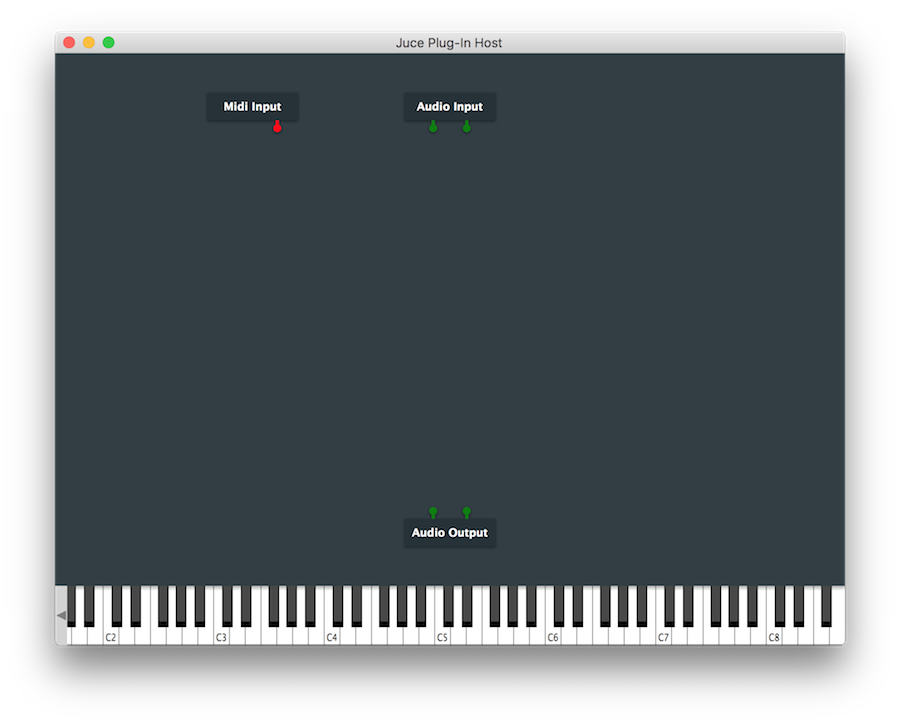Best Way To Develop Vst Plugins
Open Source Audio Plugins & Apps. A list of open source VST (and other format) plugin/app projects. The intention of this list is to catalog open source plugins or apps which are fully featured or are useful.
Label the new folder as “Plug-ins”. Drag it into your Sidebar Favorites section to make it available as a shortcut there. Go to your VST plug-ins folder. Right click on each plugin you want and choose “Create shortcut” (multi-selection works too). Move these shortcuts to your new folder, and create. Definitely one of the best free VST plugins you ought to have in your VST rig! 33) MX Project T. Rex 606 Modelled after the vintage Roland TR-606 drum machine of yore, The T.REX 606 is a beast in its own right with some added bells and whistles. Users who want to build custom VST plugin effects but lack the DSP programming knowledge can use software like KRETS to make their ideas come to life. The user interface is minimal in a good way. All audio modules are accessed via a single drop-down menu that is just a single right-click away. How To Categorize AU & VST Plugins in FL Studio. To categorize your plugins so you can find the right one for the genre you're creating, go to the file browser to the left and to Plugin database. Under that go to either generators or effects and right-click. Press open and then make the folder you want to put a specific type of plugin into. C is one of the best programming languages for creating VST Plug-ins, and the reason for this is that C has a wide range of frameworks and libraries that work so well in creating VSTs. Read more What’s the Best Way How To learn C? Today, there are so many bass VST plugins in the market optimized to produce all kinds of low-end variations with plenty customization options. For example, there are multi-sampled instruments plugins, futuristic bass solutions, synth basses and more. Most of these base VST plugins.

How to Manage VST Plug-Ins with Windows
The way you install your plug-ins can help determine how easy they are to use
by Craig Anderton
You’ve blown your budget on some kick-ass plug-ins, both processors and instruments, and downloaded scores of public domain goodies from the interwebz. Face it: you have a bad case of plug-initis.
But as the number of plug-ins increases, watch out. Some plug-ins are incompatible with certain programs or systems. Or, a program that used to work fine might hang whenever it tries to load a new plug-in—so you can’t open the program to tell it to ignore the problematic plug. And for some reason, that tempo-synched delay simply refuses to sync . . .
Before matters get out of hand, let’s look at how to raise well-behaved plug-ins. We’ll concentrate on the VST format, but also give a nod to the DirectX plug-ins. I call DirectX a “zombie format” because new development ceased a long time ago after Microsoft lost interest, but they remain relevant and are supported by Sony, Cakewalk, Acoustica, and others.
CALLING ALL PLUG-INS

VST plug-ins usually reside in a folder called (surprise!) “Vstplugins.” Ideally, you should keep all your VST plug-ins in one folder. If you have multiple programs that support VST plug-ins, point them to this one folder. Best free vst auto panning. Usually you can specify a folder where a program should install its plug-ins during the installation process, or via a Preferences or Options page where you can specify the folder’s path.
Because some program’s plug-ins will work with other programs, you might want to specify C:Program FilesCommon Files as an appropriate location to install common shared executable content like plug-ins. For example, C:Program FilesCommon FilesVST3 can be a suitable location for VST3 files; some vendors (including Celemony) put plug-ins in C:Program FilesCommon FilesVST2.
Some programs will instead insist on installing their own plug-ins folder, and reference that. You may be able to simply drag a plug-in from that folder to your main folder, but that doesn’t always work. Move the plug-in, tell your program not to scan the original folder, and see if the program recognizes the plug-in in your main folder. If so, you should be okay but there may also be presets and other elements scattered around. Often, it’s best just to leave any installed folders (Fig. 1), and include them in the scan path. (Also, do a search on “vstplugins”—you might be surprised at how many folders you unearth.)
Fig. 1: In Live’s Preferences menu, like most other hosts, you can specify a path to the VST plug-in folder. Clicking on the browse button can change the path from the default folder.
DirectX plugs can live anywhere, because installing them registers them in the scary Windows Registry. However, you may not know exactly where they are, which can be a hassle if you want to uninstall a troublesome plug-in and there’s no obvious uninstall routine. If you’re a Cakewalk SONAR user, the Plug-In Manager lists your DX plug-ins and shows their file paths, file names, and registry keys; it can also import, export, and manage (delete, rename) plug-in presets.
WHEN GOOD PLUGS GO BAD
Many programs that host plug-ins scan and initialize them when launched. Often there will be a “status line” that shows each plug’s name as it’s being scanned. Sometimes, though, the program will “freeze” at a particular plug-in.
Don’t panic! Like other software, first check for updates on the web, especially if you’ve changed operating systems. Sometimes that alone fixes the problem. If it doesn’t, with a VST host, look at the status line. If it’s stuck on a plug-in name, 99% of the time that will be the plug-in causing the problem. Reboot, go to the Vstplugins folder, then drag the plug-in out of the folder. Now re-launch the program. This time, it won’t hang at the plug-in because the plug-in isn’t there. Hopefully, the program will load completely but if it hangs on another plug-in, remove it too.
After the program loads successfully, quit the program, then drag one of the plug-ins back into the Vstplugins folder and re-launch the program. Often times, the plug-in will now be recognized. Repeat for all the plug-ins you removed. If the program still hangs at a particular plug-in, try re-booting and re-launching. If a problem remains after a few reboots/re-launches, the plug-in may simply be incompatible.
If a particular program is allergic to certain plug-ins, you can:
Best Way To Develop Vst Plugins Wordpress
- Create a separate plug-ins folder, drag over copies of all the plug-ins known to work with the program (or re-install if needed), and point the program to this folder.
- Disable problematic plug-ins from within the program. For example, Steinberg Wavelab has an Organize Master Section Plug-Ins function under the Options menu where you can “turn off” plug-ins (Fig. 2).
Fig. 2: Wavelab’s plug-in organizer can enable and disable specific plug-ins; it also provides some information about them.
This problem seems less common with DirectX, but if a DX host program hangs on launch while scanning plug-ins, close it and launch again. In almost every time this has happened to me, running the program a couple of times will eventually recognize all the plug-ins. With some programs, you can create different plug-in layouts so that, for example, you could create a set that excludes all DirectX plug-ins (Fig. 3).
Fig. 3: SONAR’s plug-in manager lets you enable or exclude plug-ins. It also furnishes path and registry information, allows exchanging plug-in presets with other SONAR users, and lets you create “layouts” for particular plug-ins—for example, you can create one with only 64-bit plug-ins, and another with particular collections of plug-ins.
32-BIT PLUG-INS IN A 64-BIT WORLD
Vst Plugins On Windows 10
People often ask if their favorite 32-bit plug-ins will work with 64-bit programs. The answer is a definitive..maybe. There are two popular “wrappers,” BitBridge and JBridge, which allow 32-bit plug-ins to work in 64-bit systems. It’s amazing they work at all, but do note that some plug-ins simply will not play nice. Also, some users report one program being able to wrap some plug-ins while the other one can’t, so it is somewhat hit-or-miss. It’s highly recommended that if you’re running a 64-bit DAW with a 64-bit OS that you use true 64-bit plug-ins, but that said, these utilities can extend the life of your 32-bit plug-ins while you wait for 64-bit versions to arrive..assuming they ever do, of course.
Bear in mind that plug-in bridging can make some systems less stable. This isn’t really the fault of the bridge software, but the result of trying to do something that stretches the boundaries of compatibility.
LEAN AND FRESH
If you don’t use a plug-in, remove it from your system (for VST, uinstall or if that's not possible, drag to a different folder or delete; for DirectX, use the uninstall routine). Although plug-ins tend to be pretty solid, fewer plug-ins mean less scanning time when a program launches, and a tidier selection process.
Okay! Now go weed out the clutter and refresh your plug-ins—your system will thank you for it. -HC-
______________________________________________
Craig Anderton is Editorial Director of Harmony Central. He has played on, mixed, or produced over 20 major label releases (as well as mastered over a hundred tracks for various musicians), and written over a thousand articles for magazines like Guitar Player, Keyboard, Sound on Sound (UK), and Sound + Recording (Germany). He has also lectured on technology and the arts in 38 states, 10 countries, and three languages.